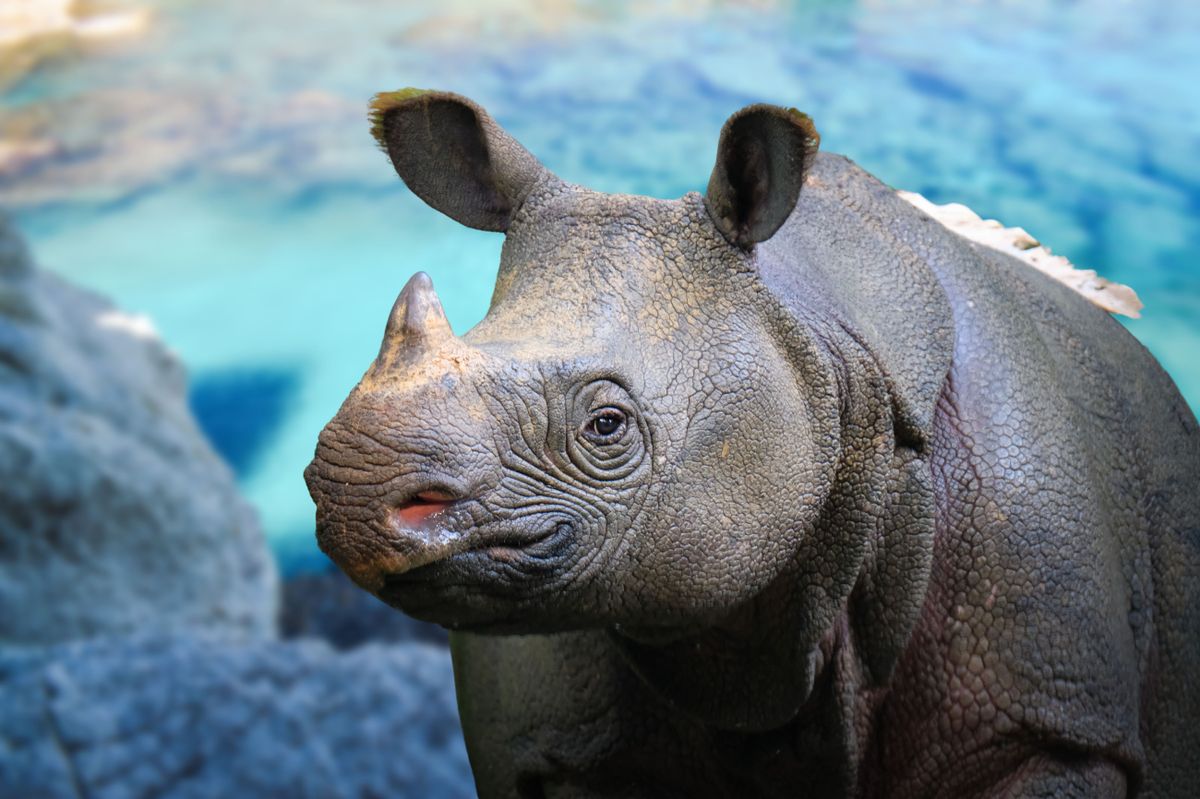
Did you know the Javan rhinoceros is one of the rarest large mammals on Earth? With fewer than 80 individuals left, these incredible creatures face the brink of extinction. Found only in Ujung Kulon National Park in Indonesia, their survival depends on conservation efforts. Unlike their African cousins, Javan rhinos are smaller and have a single horn. They prefer dense, lowland rainforests and are incredibly elusive, making them hard to study. Despite their size, they are surprisingly agile and can navigate thick vegetation with ease. Understanding these unique animals is crucial for their preservation. Let's dive into 29 fascinating facts about the Javan rhinoceros!
The Mysterious Javan Rhinoceros
The Javan rhinoceros, also known as the Sunda rhinoceros, is one of the rarest large mammals on Earth. These elusive creatures are shrouded in mystery due to their limited numbers and secretive nature. Let's uncover some fascinating facts about these incredible animals.
-
The Javan rhinoceros is critically endangered, with fewer than 75 individuals remaining in the wild.
-
These rhinos are found only in Ujung Kulon National Park in Indonesia, their last remaining habitat.
-
Javan rhinos are solitary animals, except for mothers with calves.
-
They are smaller than other rhino species, weighing between 900 to 2,300 kilograms.
Unique Physical Characteristics
Javan rhinos have distinct physical features that set them apart from other rhino species. Their appearance is both unique and adapted to their environment.
-
They have a single horn, unlike the two-horned African rhinos.
-
The horn of a Javan rhino rarely exceeds 25 centimeters in length.
-
Their skin has a mosaic pattern, resembling armor plates.
-
Javan rhinos have a prehensile upper lip, which helps them grasp leaves and branches.
Habitat and Diet
Understanding the habitat and diet of Javan rhinos is crucial for their conservation. These factors play a significant role in their survival.
-
Javan rhinos prefer dense lowland rainforests, grasslands, and reed beds.
-
They are herbivores, feeding on a variety of plant species.
-
Their diet includes shoots, twigs, young foliage, and fallen fruit.
-
Javan rhinos need to consume large amounts of food daily to sustain their massive bodies.
Reproduction and Lifespan
Reproduction in Javan rhinos is a slow process, contributing to their critically endangered status. Their lifespan and reproductive habits are vital to their conservation.
-
Female Javan rhinos give birth to a single calf after a gestation period of 16 months.
-
Calves stay with their mothers for up to two years before becoming independent.
-
Javan rhinos can live up to 40 years in the wild.
-
They have a slow reproductive rate, with females giving birth only once every 4-5 years.
Conservation Efforts
Efforts to save the Javan rhinoceros are ongoing and involve various strategies. Conservationists are working tirelessly to ensure the survival of this species.
-
Ujung Kulon National Park is a protected area dedicated to Javan rhino conservation.
-
Anti-poaching measures are in place to protect these rhinos from illegal hunting.
-
Habitat restoration projects are underway to improve the quality of their environment.
-
Conservationists use camera traps and other technology to monitor the rhino population.
Challenges and Threats
Despite conservation efforts, Javan rhinos face numerous challenges and threats. Understanding these threats is essential for developing effective conservation strategies.
-
Habitat loss due to human activities is a significant threat to Javan rhinos.
-
Natural disasters, such as tsunamis and volcanic eruptions, pose risks to their habitat.
-
Disease outbreaks can have devastating effects on the small population.
-
Inbreeding is a concern due to the limited genetic diversity of the population.
Interesting Tidbits
Beyond the serious facts, there are some intriguing and lesser-known tidbits about Javan rhinos that highlight their uniqueness.
-
Javan rhinos are excellent swimmers and can cross rivers with ease.
-
They are known to wallow in mud to cool off and protect their skin from parasites.
-
Unlike other rhino species, Javan rhinos are rarely seen in the wild, making sightings extremely rare.
-
They communicate through vocalizations, scent marking, and body language.
-
Javan rhinos have no known predators, with humans being their only significant threat.
The Final Word on Javan Rhinos
Javan rhinos are among the rarest creatures on Earth. With fewer than 80 individuals left, they face a critical battle for survival. These solitary animals, found only in Indonesia's Ujung Kulon National Park, are vital to their ecosystem. They help maintain the health of the forest by spreading seeds and creating clearings for new growth.
Conservation efforts are crucial. Protecting their habitat from deforestation and poaching is essential. Organizations worldwide are working tirelessly to ensure these magnificent animals don't vanish forever.
Understanding the importance of Javan rhinos can inspire more people to support conservation initiatives. Every small effort counts, from spreading awareness to donating to wildlife organizations. Let's do our part to ensure future generations can marvel at these incredible creatures. The survival of Javan rhinos depends on us all.
Was this page helpful?
Our commitment to delivering trustworthy and engaging content is at the heart of what we do. Each fact on our site is contributed by real users like you, bringing a wealth of diverse insights and information. To ensure the highest standards of accuracy and reliability, our dedicated editors meticulously review each submission. This process guarantees that the facts we share are not only fascinating but also credible. Trust in our commitment to quality and authenticity as you explore and learn with us.
